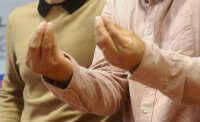Along with Sigmund Freud’s “Civilization and Its Discontents”, Carl Jung’s “Modern Man in Search of a Soul” formed the foundation for the new field of human psychology at the beginning of the 20th Century. All at once, the human mind itself was revealed to be complex and mysterious, rather than simply subject to the influence of divine forces, evil spirits, spells, curses or the shape of one’s skull.
Freud attempted to make psychology a respected science, and his work embodied that hope by codifying a set of rules applying to the subconscious forces that govern how people think, feel and act. A product of Victorian times, his own fixation on matters of sexuality assumed prominence in his theories about what makes people tick.
Jung departed from Freud’s doctrines, and moved towards a more mythological approach in which he proposed that psychological archetypes govern subconscious activity. This veered into realms of mystical speculation about the collective unconscious shared in common with humanity and natural forces.
From those not-so-humble beginnings, modern psychology in all its forms was born, and psychology itself – a search for self-understanding – became a respectable field of study in western society. Many offshoots developed as the century progressed; psychotherapy movements including Gestalt, behavioral, cognitive, and developmental arose alongside theories about attachment disorder, childhood trauma, autism and the old standbys of “nature vs. nurture.” For a while rebirthing was popular, and psychological theory permeated ideas in the psychedelic 60’s.
Psychology today plays a role in the courtroom, police investigations and, of course, on TV and in movies; it’s earned a leading role in probing the depths of individual behavior and social phenomena.
Today, yet another form of psychology is emerging, one I call Psytechology, the psychology of technology. Technology is now so pervasive and ubiquitous that its effects on human psychology cannot be ignored. Professor Neil Postman explored this territory in his 1985 book “Technopoly” and worried about how the culture of technology affects people and society; his book was too early to foresee how modest were his concerns.
Children as young as two years old are spending more “screen time” than time with their parents. This is not a passive activity like watching television; the interactive nature of digital devices engages minds differently. Algorithms, not human reactions, govern device responses; these commercially manufactured experiences are internalized, though in precisely what ways remains unknown at this point.
Widespread “internet addiction” now afflicts a significant portion of the population, to the point that a temporarily lost smart phone becomes a psychological and emotional crisis. The forecast benefits of technology – increased speed and efficiency – are largely illusory, as new anxieties and frustrations co-emerge with dependence upon digital devices. Being cut off from Email, Facebook, Twitter, Snapchat and the like amounts to near exile, and prompts withdrawal symptoms nearly indistinguishable from other deep addictions – moodiness, irritability, lack of concentration and even physical symptoms of jitteriness and headaches.
Into this new breach steps Psytechology, and its specialized practitioners, psytechologists. One assumes its form of therapy will be conducted online, via Skype, of course. A combination of tech and psych support, psytechologists will soothe their clients well enough to walk them through their “find my phone” app, and then once the crisis has passed, talk about the deeper meaning of the smart phone archetype and why it is that naughty iPhone keeps getting lost.
The Archetype
Let’s imagine ourselves psytechologists, and explore the smart phone archetype now firmly established in our collective and individual psyches. If it is truly an archetype, the smart phone is not just a smart phone, but sometimes, like Freud’s cigar, connected to deeper, elemental meaning. We can explore that meaning through personification of the archetype, and delve even deeper by examining the aspects of that personification and what they represent as elements of psyche.
Like other smart phone users, I use messaging, and the archetypal, personified messenger of Greek mythology was Hermes, known as Mercury to the Romans. Hermes, pictured as wearing winged sandals on his feet and the Helm of Hades, or “cap of invisibility” on his head, was considered the messenger of the gods, and also had the role of conveying souls to the underworld, Hades. As the archetype of the smart phone, Hermes fits perfectly; he messages and conveys, but does not translate or explain.
Like Hermes, the smart phone conveys us to the otherwise hidden underworld, an illuminated realm of disembodied spirits seeking contact and communication with the living. The underworld, according to the late psychoanalyst James Hillman, is analogous to our inner world; the passage of Hermes is not literally “down” but “into” the deep recesses of the psyche, where the disembodied spirits of individual and collective unconscious reside. In this sense, our “inner underworld” is eerily familiar but like dreams, mostly uncomfortable, confusing, and frequently alarming.
The world-wide web shares these qualities; a bottomless, unpredictable, collective realm of images and ideas, fragmented, ambiguous and like the river Styx surrounding Hades, flowing constantly. Like the inner underworld we enter each night while dreaming, the underworld of the web envelops and carries us while Hermes, in the archetypal role of smart phone, provides safe passage. His winged sandals transcend time and space as we traverse to all corners of the underworld, while his cap of invisibility keeps us safely hidden; we are interlopers and observers, unless we choose to remove the cap and sandals and remain a while, ourselves becoming disembodied souls inhabiting the web’s underworld, as well.
Entering the underworld of the inner psyche or the outer psyche of the web’s collective unconscious is risky and anxiety-producing. The ease with which Hermes invisibly transports us lulls us into an observer’s illusion of safety, but once we have dipped ourselves in the river Styx and have crossed over into the underworld, things are beyond our control. Some denizens of that realm are filled with hate, and if we remove our helmet of invisibility we become vulnerable to their venom. On Facebook, on Twitter, in emails; the demons and trolls of Hades are waiting in the shadows.
In classic Buddhism, the Hell Realm is one of six realms within the Wheel of Samsara. Iconographically, the Wheel of Samsara is shown within the clawed grip of fang-toothed Mara, the deity of Death. The Hell Realm is the realm of unmitigated fear. Interestingly, it’s said that once the merit of the the denizens of the God Realm is exhausted, they descend to the Hell Realm, stinking with fear.
The Deeper Meaning of the Archetype
Archetypes are elemental; in other words, human experience includes deep patterns of psyche associated with instincts, biological drives, and needs of survival. These elemental patterns are universally expressed and emerge in religious, spiritual and social iconography and beliefs, worldwide. Among these is the need to communicate.
Like most primates, humans are inherently social beings who form family clans and communities. The etymological root of both “communicate” and “community” is the same, from the Latin “communis” meaning “shared.” This fact speaks to the appearance of creation myths with references to speech and communication in diverse cultures; our own Bible says, “In the beginning was the Word.” Tibetan Buddhists believe the universe emerged from primary “seed syllables.” “Logos” was used by the ancient Greeks to mean “word, speech or argument.” In short, communication permeates the history of human culture.
In Greek mythology, various gods and goddesses spoke to and through human beings. For those Greeks, visual appearances and such “sounds in the head” were not self-generated, interior phenomena, but the true expression of external beings able to penetrate and act within the human realm without obstruction. Thus conceived, those gods were myriad and many-faceted, animating the life of plants, animals and people alike. It’s difficult for us to imagine our thoughts and feelings as external, but for the Greeks and other ancient peoples, not to mention some present-day theoretical quantum physicists, entangled consciousness as a non-local phenomena felt not only possible, but true. Appeasing, appealing, supplicating, praying and sacrificing to the gods was therefore not mere “superstition” in the modern sense, rather they were, and remain, a set of magical forms of communication using rituals, objects, incantations, chants, and intoxicating plants. Similar forms of communication are still employed in the Ayahuasca rituals of South American shamans and Peyote ceremonies of Southwest Naive Americans.
Smart phones are just another in a long line of modes of communication people have employed for thousands of years; to some “Rip van Winkle” asleep for the past 25 years, such phones would appear magical, indeed. With each mode or medium of communication, human society establishes and re-establishes its relationship with the transformative archetypes of communication. Outwardly, these forms differ, but all answer what appears to be a primordial calling to communicate with others, both living and dead.
This raises the basic question, is there a purpose to communication? The instinct for survival appears to stimulate methods of offense and defense; at close range these methods include claws, teeth and displays of aggression or seduction, but at longer range, the method is through making sounds. In troops of howler monkeys settled among the trees of South American forests, vocal communication is overtly used to warn of danger from predators. Similarly, chimpanzees use branches to hit tree trunks and shake plants while hooting loudly.
Hillman observes that “image is instinct,” meaning archetypes represent primal forces of existence. If he is correct, our use of smart phones, primarily instruments presenting images of words and pictures, is therefore instinctual, which explains why we take to them so readily and become so anxious when they are lost.
The Bias of Communication
Canadian university professor Harold Innis traced the development western communication in his book of collected essays, “The Bias of Communication.” He documents the methods of documentation employed by various cultures ranging from Babylonian use of stone and clay, Egyptian production of Papyrus, European parchment (tanned hides), incorporation of cloth-based paper and the effects of printing. Tracing these technological innovations across centuries, he notes the effects on the cultures that created and employed them; social organization and expansion was, he believed, inextricably tied to mode and medium of communication. What he described as a “monopoly of knowledge” established the primacy of powerful governing dynasties, and these monopolies were tied to the control of the particular media each culture employed.
In more than twenty books, media scholar Marshall McLuhan spent forty years exploring our relationship to media and communication. He credited Innis with creating the foundation of his work, and even modestly described himself as simply following in Innis’ footsteps. Famous for the phrase “the medium is the message,” McLuhan’s curiosity extended across many disciplines and activities. The primary thesis underlying his explorations was that each new form of media successively affects and alters the users of that media. In keeping with this thesis, McLuhan began by exploring the production of the printed word using moveable type to produce books in Western Europe, where an alphabet of phonetic symbols emerged as opposed to the pictographic symbols of, for example, China. This use of an “eye for an ear”, according to McLuhan in his ground-breaking book “The Gutenberg Galaxy” accounts for the west’s particular bias towards linear and literal vs. non-linear, imagistic interpretation. Thus, he stated, language and media transform culture, and do not simply reflect it.
The last of McLuhan’s books was completed from his notes by his son, Eric McLuhan. Entitled “Laws of Media” it presents the distillation of McLuhan’s observations and thoughts over his entire career, and provides an analytical tool to assess what McLuhan believed are four inevitable types of effects of the widespread introduction of any new media, or for that matter, any cultural artifact. The timing of the observable effects can vary, but all assume a formal cause of change simultaneously. In other words, he describes the resonance between psyche and archetype, how ideas and images become archetypal psychological anchors that both stabilize and inhibit psyche and corresponding thoughts, feelings and behaviors.
The four effects described by McLuhan of any new media or cultural artifact include: (1) Obsolescence, (2) Enhancement, (3) Retrieval, and (4) Reversal. As psytechologists, let’s explore and analyze the smart phone by observing these effects, and then imagine what psychological effects flow from those.
Obsolescence is an outcome of the introduction of a new media or artifact on a previously used media or artifact. Smart phones essentially rendered “flip” phones obsolete; “flip” phones rendered large mobile phones with long antennas and pagers obsolete; mobile phones spelled the obsolescence of heavy “wired” phones and most phone booths; “wired” phones made the telegraph largely obsolete, and so forth. You can observe McLuhan’s laws in operation by watching a decade’s worth of Law and Order. As fully capable hand-held computers, today’s smart phones are even making desktop computers obsolete. By the same token, the use of hand-written notes and handwriting overall has declined. Psychologically, obsolescence is a form of death, and our inclination is to avoid the realization of death by all means possible. Phone upgrades protect us from obsolescence and thereby help us feel we are avoiding death. The urge for a new and better phone stimulates our sense of survival in an age when “connectedness” is nearly life itself.
Enhancement is extension of a sensory capability to a new and higher level. Just a telephones extended the human ear across great distances, so cell and digital smart phone technology has further extended our range of communication. The nature of content has been enhanced as well; full length movies can be streamed over the internet and watched at our convenience. The speed of computing time and delivery are increasing as well. The psychological effects of enhancement feed ego and its desire for control. As our sensory capacities grow, so to does our sense of power, and conversely, loss of power implies loss of control. Thus rather than calming us, smart phones enhance and increase our anxiety.
Retrieval involves the process of new media or artifact reaching backwards to retrieve earlier forms. An example are computer keyboards manufactured to sound and feel like manual typewriters, with raised keys and producing the “clacketty-clack” of an old Remington. Retrieval speaks to our desire, often nostalgic, to retain familiar cultural artifacts, older forms of the archetypes. Thus our smart phones offer “ring” tones which include an old-fashioned “bell-ringer” that sounds like the telephones produced mid-twentieth century. The psychological effect of retrieval, ironically, is sentimentality, an emotional attachment to those things we have lost, those things that are otherwise dead. In this way, we move into the seduction of ersatz experience and a sense of lost innocence.
Reversal, finally, is an effect that is the opposite of what’s expected from a new media. As adoption of the media increases, buttressed by enhancement, what began feeling like progress ends up feeling burdensome. The smart phone, having replaced telephones, desktops, pagers, message machines, televisions, video recorders and cameras, now are the central character in our media-centric lives. Psychologically, rather than a convenience, our smart phone becomes a ball and chain. We keep it close-by and are petrified of losing it; like a magical fetish its presence provides a sense of safety and security, albeit false. Rather than fostering our independence, like the Peanuts’ character Linus, we end up neurotically tethered to a “blankie” for security.
Extending the Hermes Archetype
One way to view what’s happened, psytechlogically, is by extending the understanding of our mythological archetype. In Greek mythology, each god appeared in multiple manifestations, each manifestation representing a particular aspect of that deity. Hermes, for example, was not only a messenger and escort to the underworld; he had many other manifestations.
A singer and musician, he is credited with the invention of the tortoise-shell lyre, the shepherd’s pipe and the musical scale. With such “techne” (the linguistic root of “technology” and “technique”) Hermes is a master of deceit, a thief and clever trickster, able to reverse circumstances to his advantage, earning him both praise and condemnation of the other Olympians. Notably, in the Greek myths the word “phone”, meaning “voice”, accompanies descriptions of the acts of Hermes. Our smart phone represents a “smart voice,” a voice that seduces and outwits us. Along with the lyre, the voice or “phone” of Hermes represents what the Greeks called “amechania”, a device from which even his brother Apollo could not escape. Such fascinating traps and tricks of Hermes are a hallmark of the archetype.
An outlaw who forges his own path, Hermes covers his tracks. He simultaneously represents order and disorder by performing misleading acts of dissimulation in which he assumes various disguises. Thus “click bait” is a favorite trick of Hermes, trapping smart phone users in snares of pornography and hacker schemes. By his machinations Hermes confuses opponents and through cunning intelligence and double-talk attains his desired ends.
He is credited with teaching the other gods to make fire and, not surprisingly, invented the throwing of dice made from knuckle-bones for divination, or what we today call gambling. He assisted the Three Fates in the composition of the alphabet, and is said to have invented astronomy, weights and measures and the cultivation of the olive-tree.
But first and foremost, above all else, Hermes is a mediator, a go-between; he marks the paths and roads that guide journeys. He is the god both of secured doors and hinges, analogous to the programming that mediates two-way functionality of internet routers and servers and facilitates smart phone communication. Most significantly, Hermes is ambiguous; he plays his tricks within the space between, the gaps that separate the collections of ones and zeros of digital technology.
This is also the nature of “the cloud”, the space in which digital information is stored. Residing as fragmentary bits of information, its nature – like Hermes – is ambiguous; the cloud needs Hermes as a go-between to organize the chaos into knowledge and wisdom. Not surprisingly, the digital cloud replicates the organizational schema of mind, “our head’s in a cloud”, a vast assemblage of information that remains hidden until it is called by name and directed to assume its proper linear place in order. This is the Hermeneutics of mind, Hermes the interpreter who brings order to chaos.
As psytechologists, this brings us closer to understanding what’s going on between us and our smart phones, and clearly it’s not simple. We are caught deeply within the ambiguity, traps, and dissimulations of smart-voiced Hermes as he seductively guides us into the smart phone underworld of phantoms, ghost-like apparitions, tricksters, thieves, perverts, trolls, hackers, loved ones, and the denizens found in the imagistic depths of our own psyche. He is the guide we follow, but he cannot be trusted. At best he will guide us back up from Hades; at worst he will abandon us where we will get lost among the phantoms or drown in the icy cold of the river Styx.








Be First to Comment